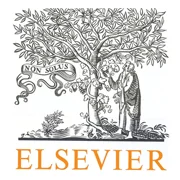دانلود ترجمه مقاله ارتباطات بحران در یک فاجعه طبیعی
| عنوان فارسی |
ارتباطات بحران در یک فاجعه طبیعی: رویکرد نظریه آشوب |
| عنوان انگلیسی |
Crisis Communication in a Natural Disaster: A Chaos Theory Approach |
| کلمات کلیدی : |
فاجعه؛ نظریه آشوب؛ سیل؛ بحران؛ ارتباطات بحران |
| درسهای مرتبط | مدیریت بحران |
| تعداد صفحات مقاله انگلیسی : 14 | نشریه : ResearchGate |
| سال انتشار : 2019 | تعداد رفرنس مقاله : 33 |
| فرمت مقاله انگلیسی : PDF | نوع مقاله : ISI |
|
پاورپوینت :
ندارد سفارش پاورپوینت این مقاله |
وضعیت ترجمه مقاله : انجام نشده است. |
1. مقدمه 2. مروری بر مقالات 3. روش تحقیق 4. نتایج 5. بحث و بررسی 6. نتیجه گیری

مطالعات مختلف حاکی از نیاز به ارتباطات بحران در بلایای طبیعی است، چون بلای طبیعی می تواند محرک بروز بحران باشد. بلایایی که در مناطق دور رخ می دهد نیازمند یک رویکرد استراتژیک و برنامه ارتباطی مناسب متناسب با ویژگی های جامعه محلی است. این پژوهش از نظریه آشوب به منظور توصیف ارتباطات بحران و آنالیز نقش ارتباطات در طول بروز سیل در منطقه کلاتن در اندونزی استفاده می کند. سیل اغلب در این ناحیه رخ می دهد. مفاهیم نظریه آشوب در طول این اختلال مانند راهنمایی درباره شرایط اولیه، شوک وضعیت، تغییرات سیستم موجود و ظهور یک یاور مورد آنالیز قرار گرفت. مصاحبه های عمیق با 14 فرد آگاه از ساکنین در دو منطقه کلاتن و 4 کارمند در اداره منطقه مدیریت فاجعه انجام شد. نتایج نشان داد که اگرچه الگوی فاجعه بار مشابهی مشاهده شد، اما مردم هنوز هر زمان اتفاق شوکه کننده ای را تجربه می کنند. همچنین مشاهده شده که ایده ها یا استراتژی مقابله با سیل به صورت خود جوش پس از بروز فاجعه اغلب در یک وضعیت فوری بروز می کند. نقش یاور برای جامعه نیز بسیار مهم است. کانال ارتباطی مورد استفاده، کانال های غیررسمی، رو در رو و استفاده از کانال های سنتی است. توانایی رسانه اجتماعی توسط روستاییان و به ویژه نسل قدیمی به کار گرفته نمی شود، با این وجود نسل جوان تر هنوز می توانند این پلت فرم رسانه اجتماعی را در طول بحران به کار گیرند. تحقیقات بیشتر می تواند حوزه مهم دیگری را ارزیابی کند که به نظر در روابط فاجعه مهم است. این مساله می تواند فرضیات بیشتری از نظریه آشوب در طول بروز فاجعه را کشف کند.
Various studies indicated the need for crisis communications in natural disasters because a disaster can trigger crisis. Disasters that occur in remote areas need a strategised approach and tailored communication plan to suit with the characteristics of the local community. This research uses chaos theory to describe crisis communication and analyses the role of communications during floods in the Klaten region in Indonesia. Flood is often struck in this area. The concepts of chaos theory are analysed during this disaster, such as guidance on the initial conditions, the shock of the situation, the changes of the existing system, and the emergence of a helper. In-depth interviews were conducted with 14 informants from residents in two sub-districts of Klaten and 4 staff in the disaster menagement district office Klaten region (BPBD). The results indicated that although the same catastrophic pattern is observed, people still find it shocking everytime. It was also observed that ideas or strategy to deal with the flood are made spontaneously following the disaster, often in an urgent state. The role of the helper is also very memorable for the community. The communication channel used are informal, face to face and utilising traditional channels. The ability of social media has not been employed by the villagers, particularly the older generation, nevertheless the younger generation could still explore this platform during crisis. Future research can evaluate another important field that appears to be important in disaster communication, which is public diplomacy. This hopefully could explore more asumptions of the chaos theory during disaster.



دیدگاهها
هیچ دیدگاهی برای این محصول نوشته نشده است.